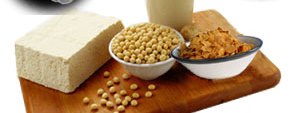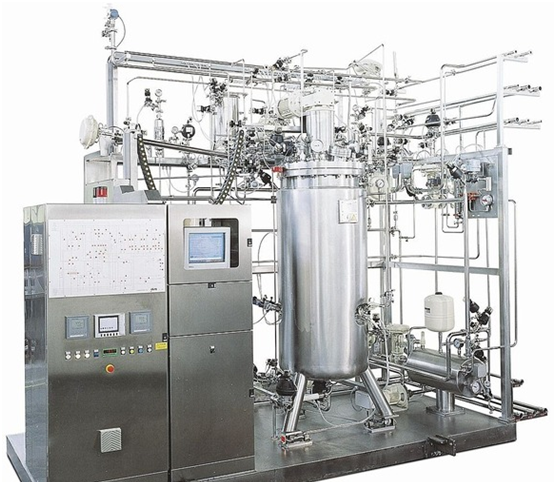Thepopulation of the world is increasing at an alarming rate, and this calls for sustainable ways of food processing and production in order to contain the current food scarcity in some parts of the world especially in sub-Saharan Africa. The big question is: “how can microorganisms help to feed the worlds teeming population?” Microorganisms have been exploited by mankind since time immemorial to produce several goods and services including foods (e.g. bread, vinegar, beer, wine, yoghurts and other beverages); and this practice is still being practiced in most food industries till date.
The changing conditions of the world’s climate (i.e. global warming and climate change) has drastically affected agriculture in many agrarian countries and this has impeded crop yield to a great deal because of the poor conditions of the soil. Both global warming and climate change has reduced the fertility of arable lands; and these phenomenon also contribute to the shortage of rainfall in most agrarian economies, thus reducing agricultural production to unbearable levels.
This fact no doubt has even left millions of people across the globe in a state of malnutrition and starvation; and these conditions has also contributed to the morbidity and mortality rates of these regions. In sub-Saharan African and other developing parts of the world for example, the majority of people worst hit by malnutrition and starvation are children, and to some extent women; and majority of these children are underweight and bed-ridden with one infectious diseases or the other.
Single cell proteins (SCPs) are simply defined as microbial-derived proteins which are generally used by humans and animals as food supplements or food. Microorganisms including bacteria, algae and fungi can serve as important nutritional supplements for humans and animals when genetically engineered to do so. Current innovations in biotechnology could help produce protein supplements for humans and animals; and this will help to assuage the contemporary insufficient protein intake by malnourished children especially in resource limited countries.
Single cell proteins are protein extracts of microbes intended to meet the protein lack of humans and animals; and SCP production is steadily increasing across the globe especially in some developed economies where this practiced has been imbibed. However, there are some ethical, toxicological and safety concerns surrounding the wide acceptability of SCPs. And this is due in part that the microbes used in the production of SCPs could pose some health dangers to the consumers of these products.
Typical example of this safety concerns is the possibility of mutation arising from the organism used for single cell protein production and the health implications of these microbes. The production of SCPs from beneficial microbes is a typical example of how microbiologists put microbes to work especially in the production of goods and services that are of immense economic importance to man and his environment.
Mushroom is a macroscopic fungus that has high nutritional value; and humans have over the years utilized and benefitted from the protein supplements of this large fungus (i.e. mushroom). If this is the case, then non-pathogenic microbes can actually be eaten by man and humans if they have been processed to deliver certain important nutritional supplements lacking in both man and animals.
The main aim of SCP production is to improve the quality of protein supplements for humans and animals; and also to make these food supplements available in large amounts for the populace. The production of more foods and food products for the world’s teeming population may seem myopic or unfeasible, but this is possible especially via the genetic engineering of microbes to produce sustainable food products to match the world’s population.
An understanding of the relationship that exists between plants and microbes especially at the molecular level could help boost agricultural productivity across the world; and the engineering of microbes to produce food products that are of immense health benefits (e.g. single cell proteins) will also go a long way in saving millions of children worldwide who are malnourished and have limited foods for their sustenance. Microbes used for the production of SCPs must meet certain criteria in order to be considered safe for the process. Some of these criteria are as follows:
- The microbes must be non-pathogenic in nature. This implies that they must not have any history of causing disease or infection in man or animals.
- The microbe must be non-toxigenic in nature. That is, they must not produce any toxin that is detrimental to the health of human’s animals.
- The metabolic by-products of the microbes must be harmless to humans and animals. This implies that they must be ‘generally regarded as safe” (GRAS) to the consumers.
Nevertheless, food supplements or food products produced via the technology of SCPs must pass through rigorous toxicological testing in order to satisfy them safe and hazard-free to the final consumers. Organic waste products inclusive of starch and sugar can also be genetically engineered via the activities of microbes to produce SCPs.
References
Bushell M.E (1998). Application of the principles of industrial microbiology to biotechnology (ed. Wiseman, A.) Chapman and Hall, New York.
Byong H. Lee (2015). Fundamentals of Food Biotechnology. Second edition. Wiley-Blackwell, New Jersey, United States.
Clark D.P and Pazdernik N (2010). Biotechnology. First edition. Elsevier Science and Technology Books, Amsterdam, Netherlands.
Farida A.A (2012). Dairy Microbiology. First edition. Random Publications. New Delhi, India.
Frazier W.C, Westhoff D.C and Vanitha N.M (2014). Food Microbiology. Fifth edition. McGraw-Hill Education (India) Private Limited, New Delhi, India.
Guidebook for the preparation of HACCP plans (1999). Washington, DC, United States Department of Agriculture Food Safety and Inspection Service. Accessed on 20th February, 2015 from: http://www.fsis.usda.gov
Hayes P.R, Forsythe S.J (1999). Food Hygiene, Microbiology and HACCP. 3rd edition. Elsevier Science, London.
Hussaini Anthony Makun (2013). Mycotoxin and food safety in developing countries. InTech Publishers, Rijeka, Croatia. Pp. 77-100.
Jay J.M (2005). Modern Food Microbiology. Fourth edition. Chapman and Hall Inc, New York, USA.
Lightfoot N.F and Maier E.A (1998). Microbiological Analysis of Food and Water. Guidelines for Quality Assurance. Elsevier, Amsterdam.
Nduka Okafor (2007). Modern industrial microbiology and biotechnology. First edition. Science Publishers, New Hampshire, USA.
Roberts D and Greenwood M (2003). Practical Food Microbiology. Third edition. Blackwell publishing Inc, USA.
Discover more from #1 Microbiology Resource Hub
Subscribe to get the latest posts to your email.



